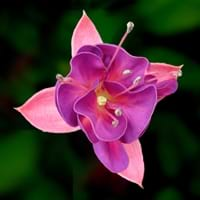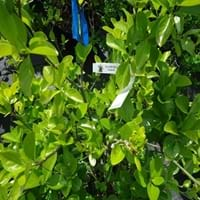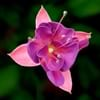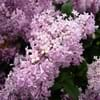Life Span
Perennial
Perennial
Type
Tender Perennial
Shrub
Origin
Caribbean
Europe, Western Asia
Types
Fuchsia Decidua, Fuchsia Fulgens, Fuchsia Splendens, Fuchsia Microphylla
Not Available
Number of Varieties
Not Available
Habitat
Forest edges, Woods
Floodplains, Open Forest
USDA Hardiness Zone
9-10
4-7
Sunset Zone
16, 17, 23, 24
1a, 1b, 2a, 2b, 3a, 3b, 4, 5, 6, 7, 8, 9, 14, 15, 16
Habit
Arching/Fountain-shaped
Oval or Rounded
Flower Color
Orange Red
Yellow green
Flower Color Modifier
Not Available
Not Available
Fruit Color
Not Available
Orange
Leaf Color in Spring
Purple, Dark Green
Green
Leaf Color in Summer
Purple, Dark Green
Green
Leaf Color in Fall
Purple, Dark Green
Yellow, Red, Yellow green
Leaf Color in Winter
Unknown
Not Available
Leaf Shape
Long Linear
Ovate
Plant Season
Spring, Summer, Fall, Winter
Fall
Sunlight
Full Sun, Partial Sun, Partial shade
Full Sun, Partial Sun, Partial shade
Type of Soil
Clay, Loam, Sand
Clay, Loam, Sand
The pH of Soil
Acidic, Neutral
Acidic, Neutral, Alkaline
Soil Drainage
Average
Well drained
Bloom Time
Indeterminate
Late Spring
Tolerances
Drought
Drought
Where to Plant?
Container, Ground, Pot
Ground
How to Plant?
Seedlings, Stem Planting, Transplanting
Seedlings, Transplanting
Plant Maintenance
Medium
Medium
Watering Requirements
Requires regular watering
Keep the ground moist but not water-logged, Requires a lot of watering, Requires regular watering, Requires watering in the growing season
In Summer
Lots of watering
Lots of watering
In Spring
Moderate
Moderate
In Winter
Average Water
Average Water
Soil pH
Acidic, Neutral
Acidic, Neutral, Alkaline
Soil Type
Clay, Loam, Sand
Clay, Loam, Sand
Soil Drainage Capacity
Average
Well drained
Sun Exposure
Full Sun, Partial Sun, Partial shade
Full Sun, Partial Sun, Partial shade
Pruning
Prune in spring, Prune lower leaves, Remove dead or diseased plant parts, Remove deadheads, Remove shoots
Prune in late winter, Prune in spring, Remove dead leaves, Remove shoots
Fertilizers
All-Purpose Liquid Fertilizer
All-Purpose Liquid Fertilizer
Pests and Diseases
Rhizoctonia Root Rot, Rust
Red blotch
Plant Tolerance
Drought
Drought
Flowers
Yes
Insignificant
Flower Petal Number
Single
Single
Foliage Texture
Medium
Medium
Foliage Sheen
Matte
Glossy
Attracts
Hummingbirds
Birds
Allergy
Asthma, Hay fever
Asthma
Aesthetic Uses
Showy Purposes
Beautification, Landscape Designing, Showy Purposes
Beauty Benefits
Not Available
Not Available
Environmental Uses
Air purification
Air purification
Medicinal Uses
Not Available
Not Available
Part of Plant Used
Flowers, Fruits
Fruits, Seeds
Other Uses
Not Available
Decoration Purposes, Showy Purposes, Used as Ornamental plant
Used As Indoor Plant
Yes
No
Used As Outdoor Plant
Yes
Yes
Garden Design
Bedding Plant, Container, Feature Plant, Foundation, Hedges, Tropical
Hedges, Screening, Wind Break
Botanical Name
FUCHSIA triphylla
EUONYMUS europaeus
Common Name
Fuchsia
European spindle
In Hindi
फ्यूशिया
आम धुरी
In German
Fuchsie
gemeinsamen Spindel
In French
Fuchsia
axe commun
In Spanish
Fucsia
husillo Común
In Greek
φουξία
κοινή άξονα
In Portuguese
Fúcsia
eixo comum
In Polish
Fuksja
wspólna wrzeciona
In Latin
Fuchsia
commune fusum
Phylum
Magnoliophyta
Tracheobionta
Class
Dicotyledonae
Magnoliopsida
Order
Myrtales
Celastrales
Family
Onagraceae
Celastraceae
Clade
Angiosperms, Eudicots, Rosids
Angiosperms, Eudicots, Rosids
Tribe
Not Available
Not Available
Subfamily
Not Available
Not Applicable
Number of Species
Not Available
Importance of Fuchsia and Common Spindle
Want to have the most appropriate plant for your garden? You might want to know the importance of Fuchsia and Common Spindle. Basically, these two plants vary in many aspects. Compare Fuchsia and Common Spindle as they differ in many characteristics such as their life, care, benefits, facts, etc. Every gardener must at least have the slightest clue about the plants he wants to plant in his garden. Compare their benefits, which differ in many ways like facts and uses. The medicinal use of Fuchsia is Not Available whereas of Common Spindle is Not Available. Fuchsia has beauty benefits as follows: Not Available while Common Spindle has beauty benefits as follows: Not Available.
Compare Facts of Fuchsia vs Common Spindle
How to choose the best garden plant for your garden depending upon its facts? Here garden plant comparison will help you to solve this query. Compare the facts of Fuchsia vs Common Spindle and know which one to choose. As garden plants have benefits and other uses, allergy is also a major drawback of plants for some people. Allergic reactions of Fuchsia are Asthma and Hay fever whereas of Common Spindle have Asthma respectively. Having a fruit bearing plant in your garden can be a plus point of your garden. Fuchsia has no showy fruits and Common Spindle has showy fruits. Also Fuchsia is flowering and Common Spindle is not flowering . You can compare Fuchsia and Common Spindle facts and facts of other plants too.





